




Quick Jump:
Looks Good to Me...
Since the primary focus (pun) of the Quasicade 2 is console gaming, the Quasicade 2 system ships with a 27" flat-tube television as its display device. Specifically, the Quasicade 2 uses a 27" DaeWoo television, which features a short depth and an exceptionally flat display tube.
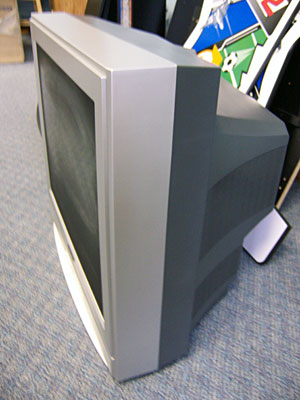
The 27" DaeWoo TV
The cabinet seems to be designed specifically for this television, including stops on the display mounting shelf that hold it in exactly the proper position. The television is covered by a 1/4" plexiglass bezel, masked to only show the television tube.

The monitor is a picture-perfect fit
One interesting design touch with the bezel is the inclusion of a bottom "flap" of smoked translucent plexiglass, which both allows you to easily access the buttons on the television, as well as use the included TV remote. The flap even has a small knob to help lift it.

The bottom flap allows easy access to the controls
The back of the cabinet is open, allowing both ventilation and easy access to the video ports on the back of the television. And there are an impressive collection of inputs: regular coaxial RF, S-Video, and three sets of composite inputs. While I've always liked a "closed cab" design, this does make it extremely easy to add new components to the system.
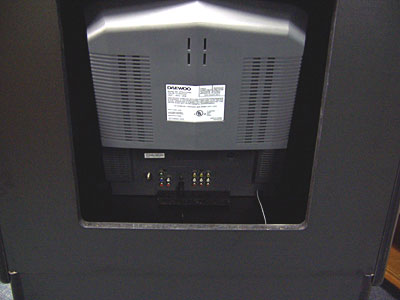
You've got plenty of connections
The Quasicade 2 ships with a custom video adapter cable that allows you to connect either an XBox, Gamecube, or PS2 console to the system (only one at a time). The adapter cable uses the S-Video port on the television, ensuring the best possible video quality.
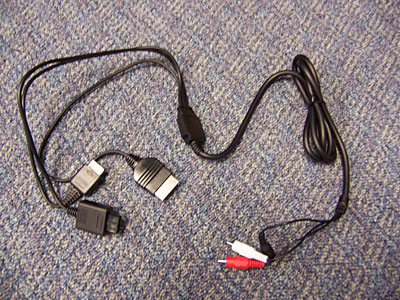
The "universal" video adapter cable
One of the unexpected recommendations in the manual is to turn the brightness down as low as possible on the television. Surprisingly, this does, indeed, create the best possible picture. Colors are brighter, blacks are darker, and the displayed image almost rivals a PC monitor in terms of contrast and sharpness (although not resolution).
This is an absolutely excellent display choice for console games, although an arcade monitor will produce a better overall picture for MAME gaming.
Sound Matters
The speakers on the television are not used, which is just as well, as you can do much better in an arcade cabinet. The marquee light box includes built-in speakers, and the system also includes a subwoofer unit that is placed inside the cabinet.
This "2.1" sound system is controlled via a small control pod which is mounted in the keyboard tray. This pod includes bass and volume adjustments, as well as a power button and an LED power indicator.
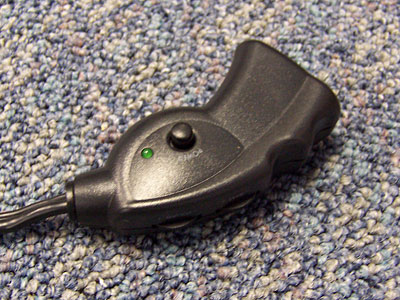
The volume control pod
The sound system included with the Quasicade 2 is a mixed bag: while the main speakers produced clear audio, the included subwoofer seemed, well, wimpy. I was expecting cab-rattling bass, but even with the bass control turned up to the maximum, the cabinet barely rumbled.
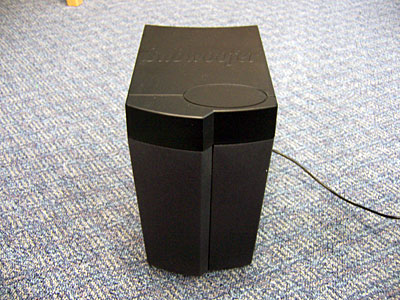
The Subwoofer
I ended up swapping out the subwoofer for one from a Creative T3000 2.1 PC sound system, and immediately discovered something: the weak bass is not entirely the subwoofer's fault: the density of the cab panels also manages to limit the bass levels produced. Even the T3000 had trouble getting the bass to resonate throughout the cabinet — it's just a very solid cab!
In the end I did get noticeably better bass from the T3000, and also got the added bonus of a headphone jack on the T3000's volume control pod. The included sound system is good, but not great.
| < Previous | Next > |
